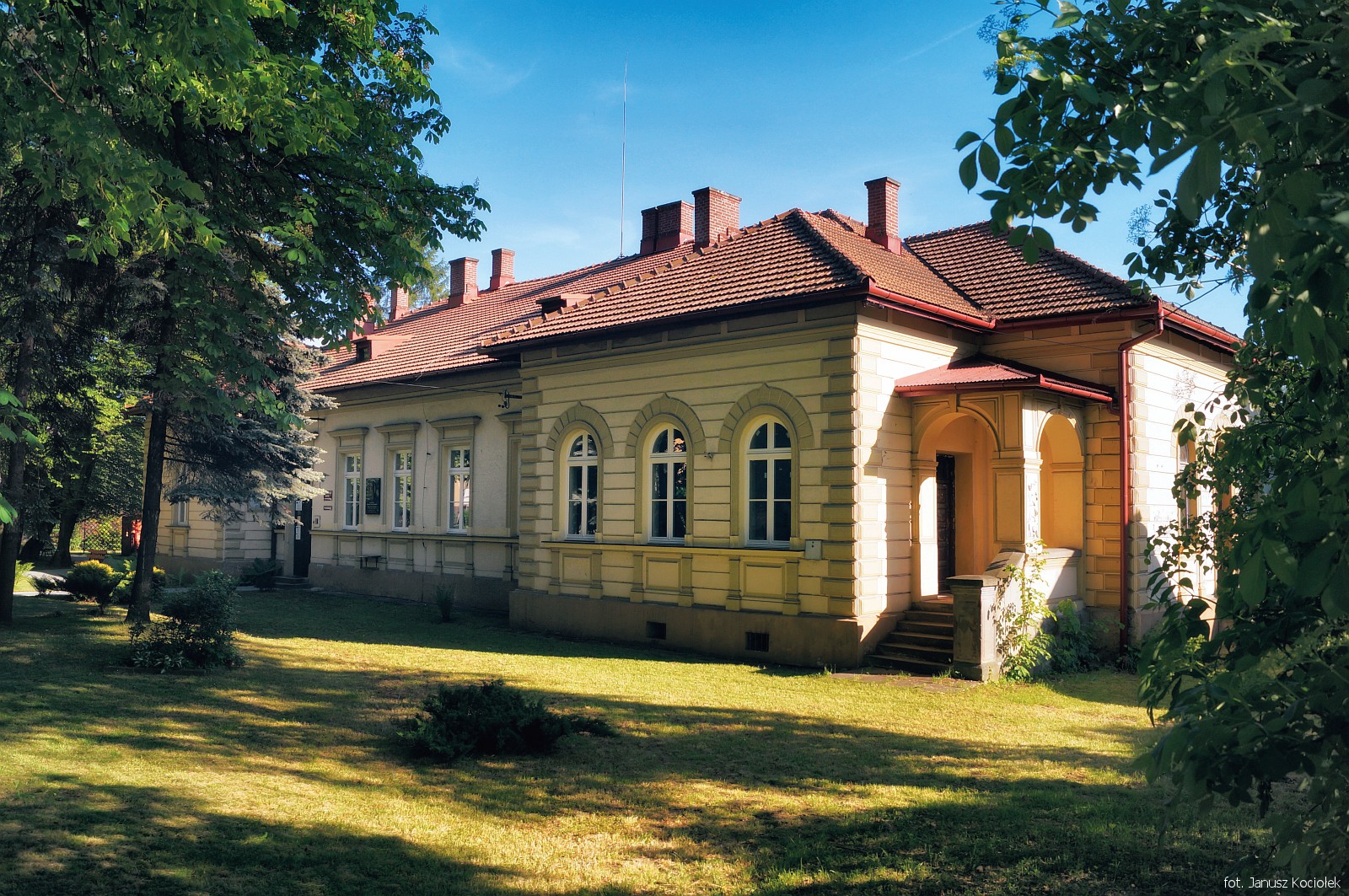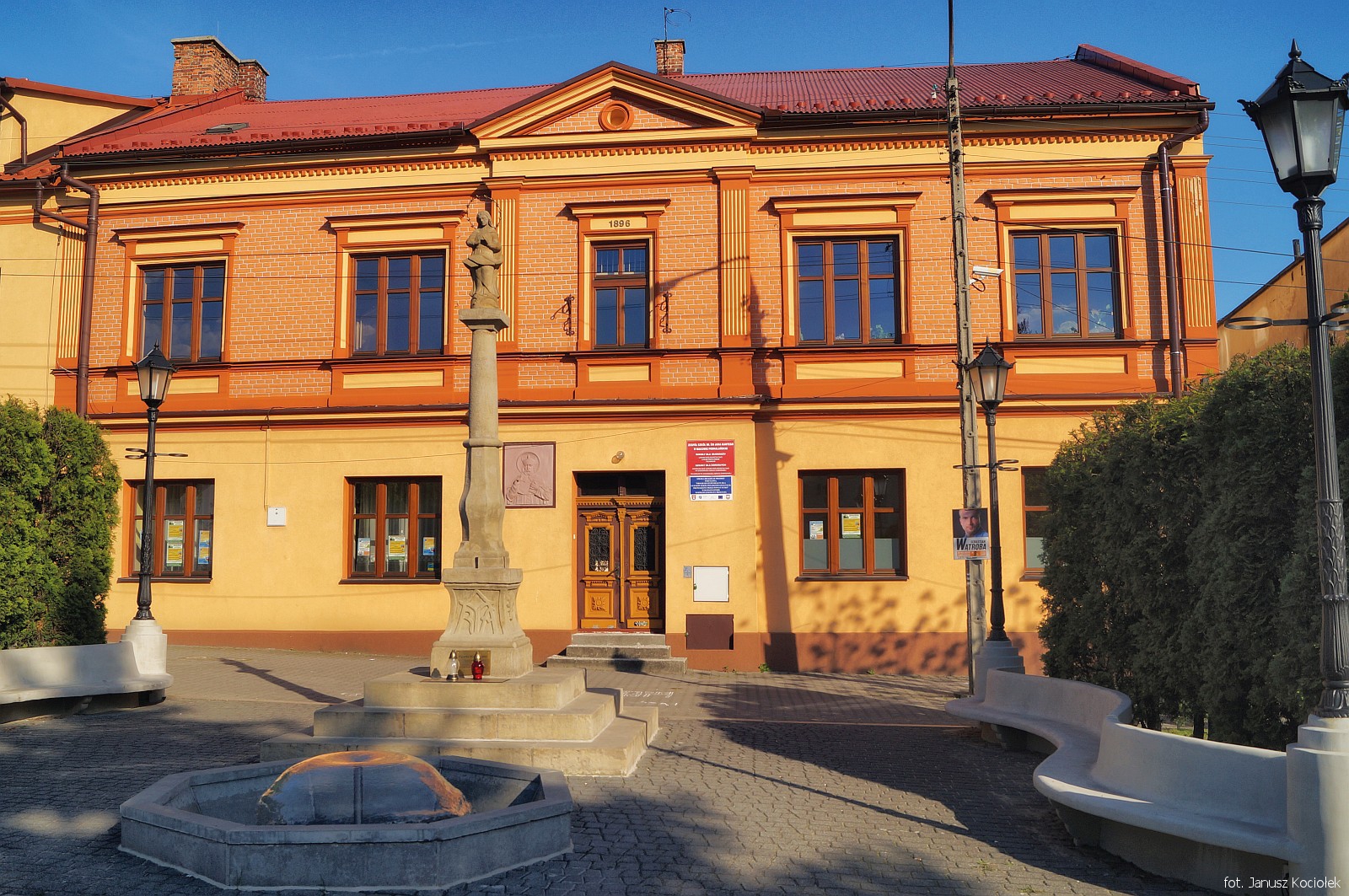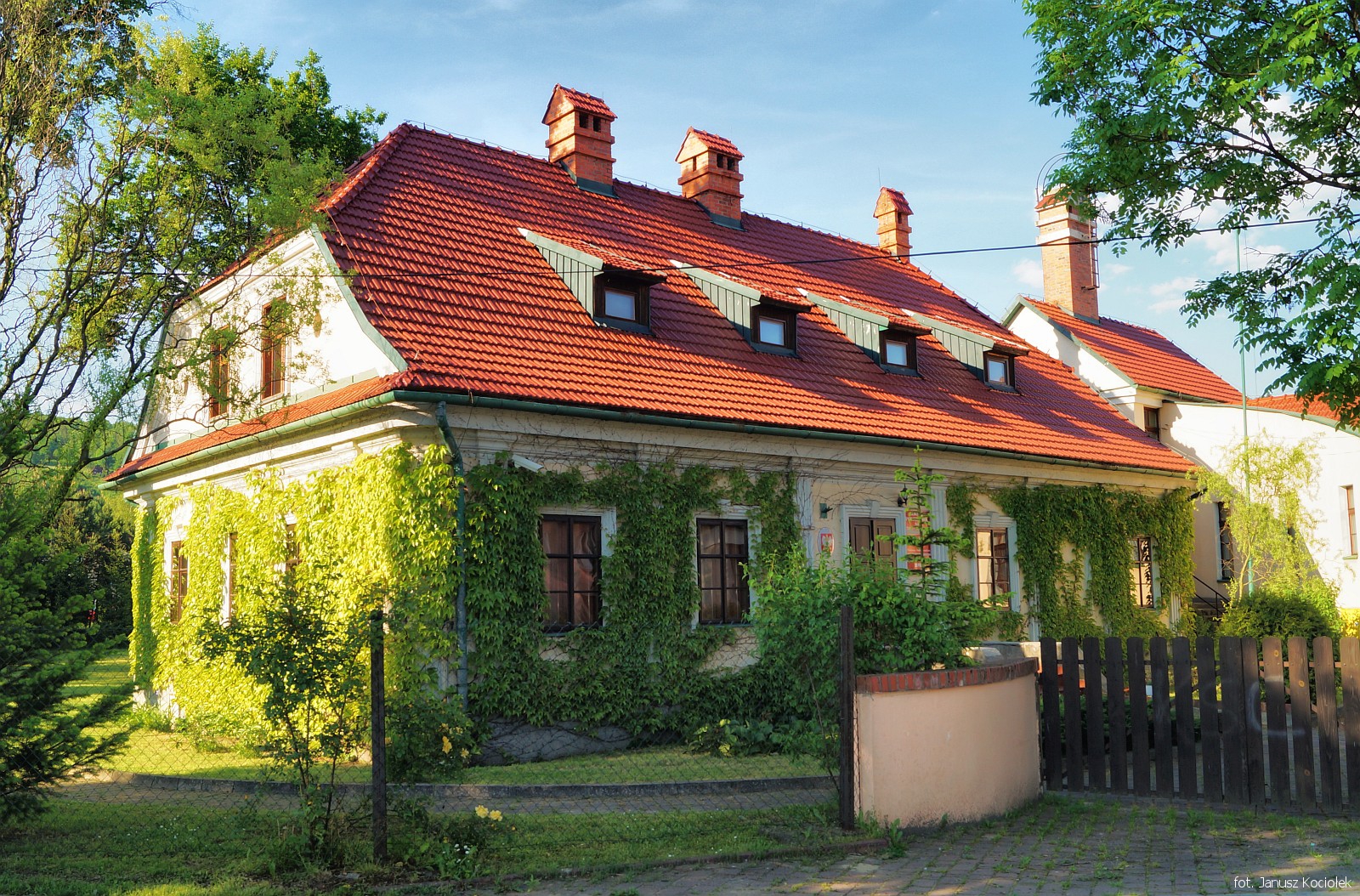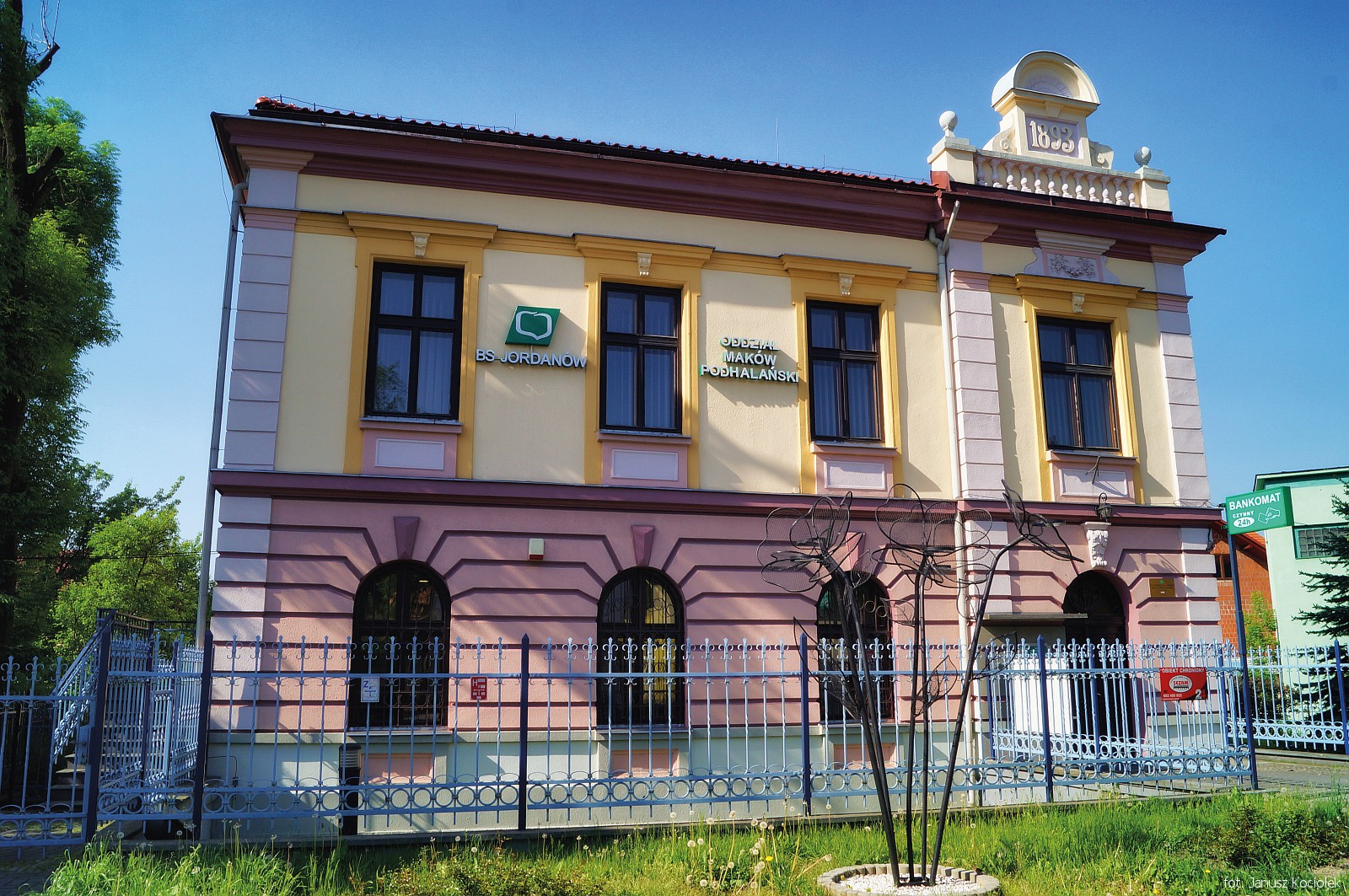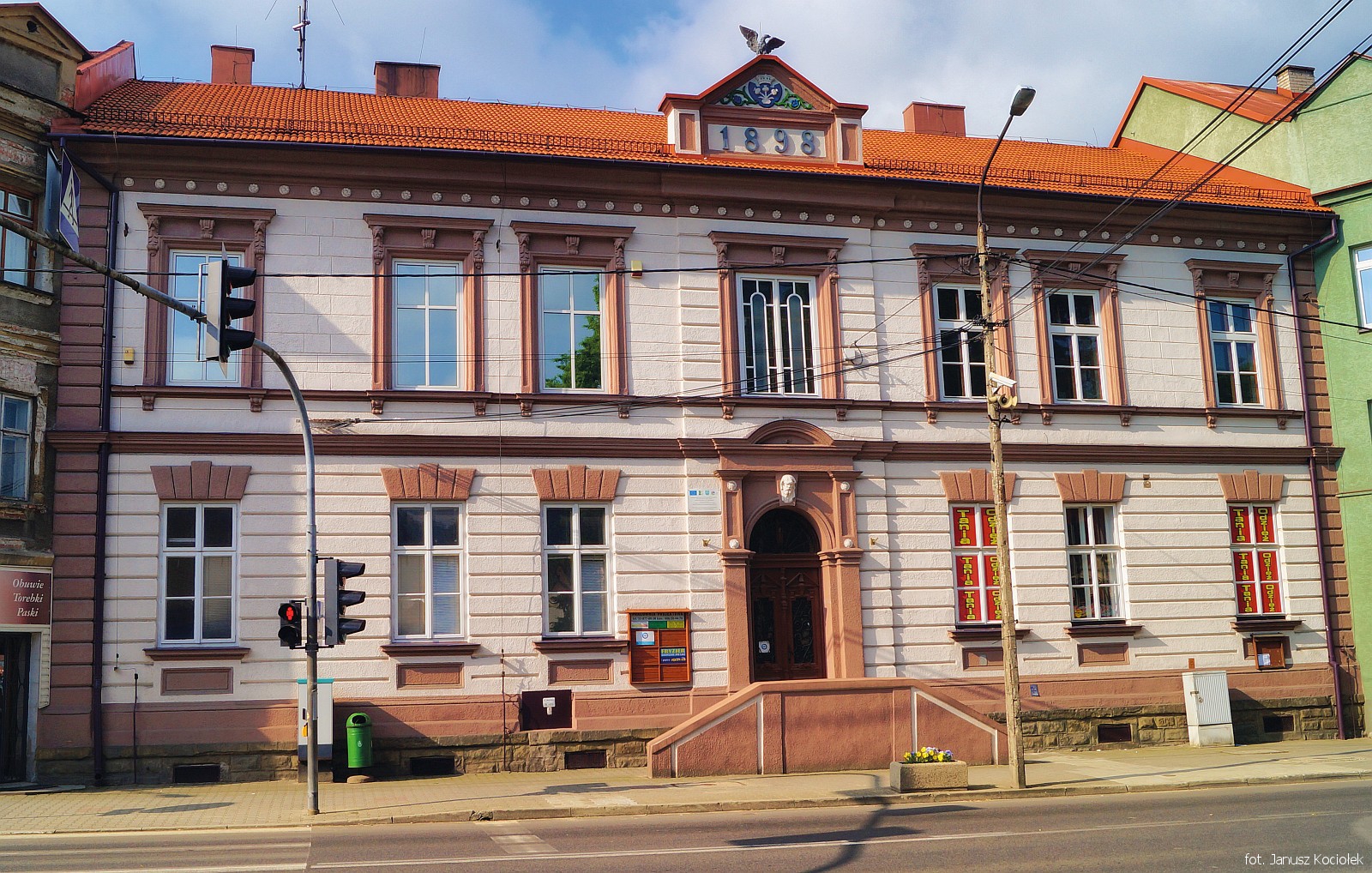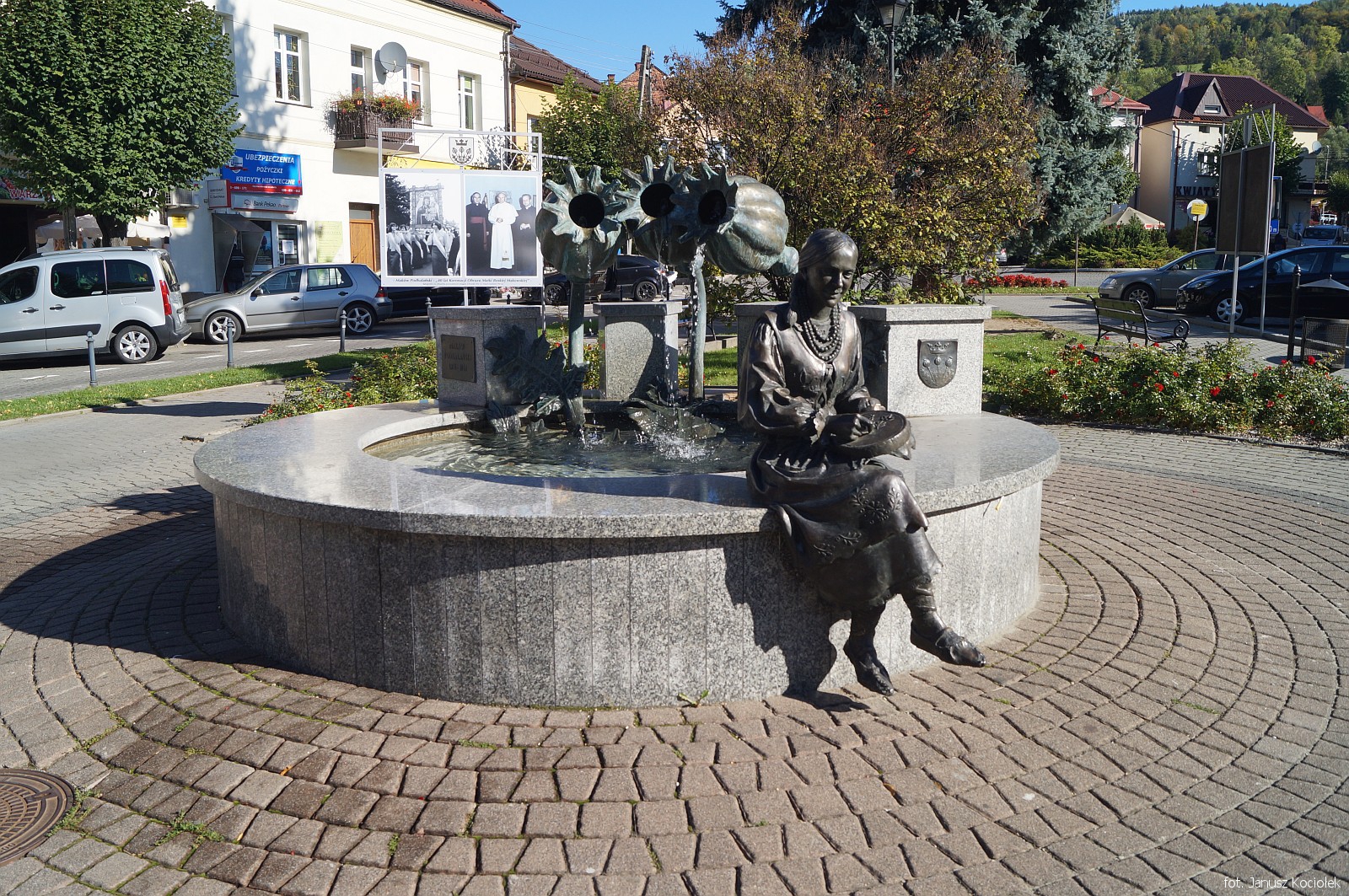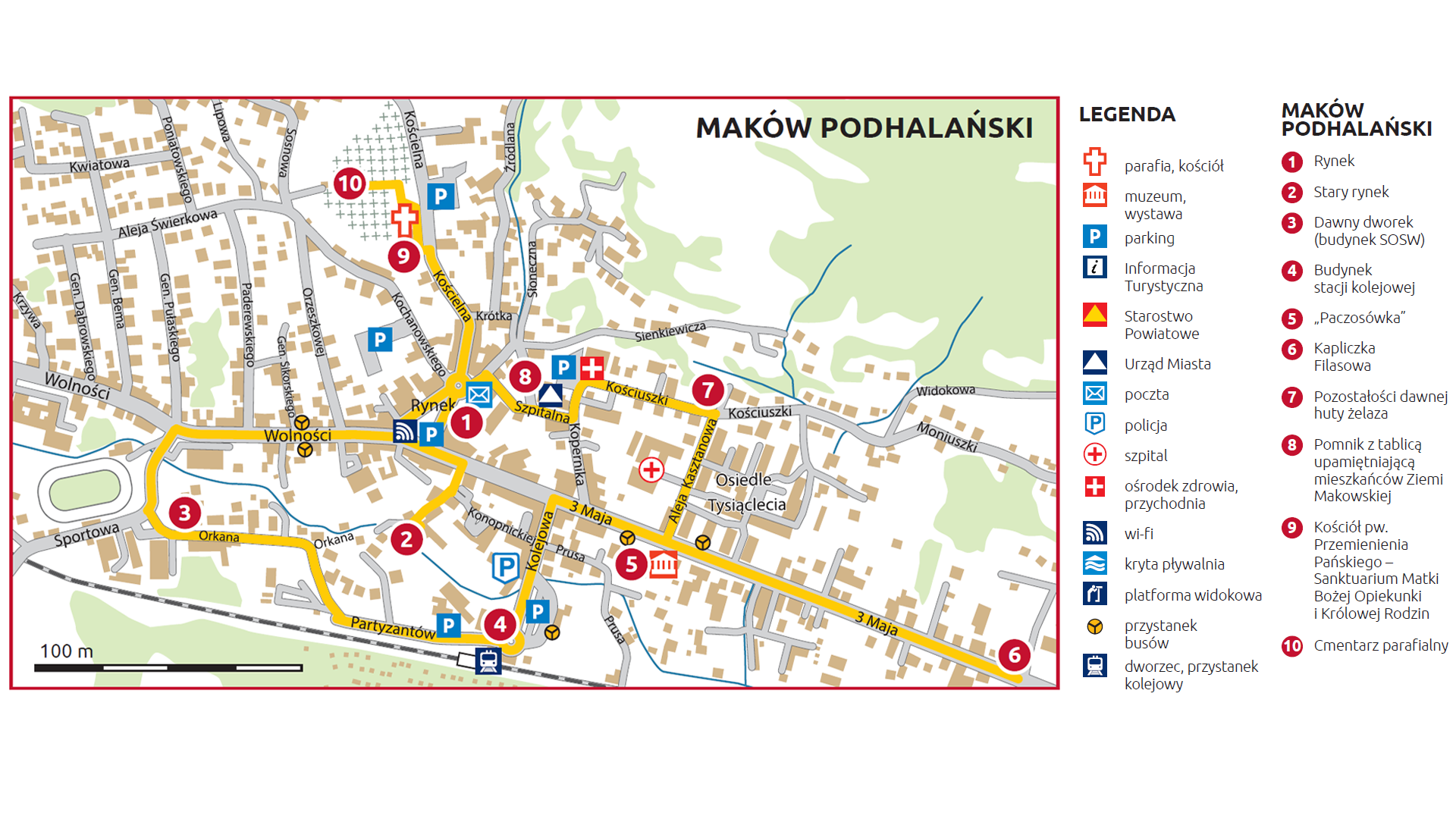Length of route: approx. 3 km, Walking time: approx. 1 hrs 15 mins (not including a visit to the Regional Chamber)
We start our walk through the town in its central point, the market square. Here stands the Monument to the Unknown Soldier and to the Memory of War Victims from 2002, designed by Henryk Ostruszko, and a fountain decorated with three coat-of-arms poppies and a sculpture of an embroideress at work. For centuries embroidery was a popular handicraft in the villages of the Babia Góra Region. Already at the end of the 18th century, the so-called white Makowski embroidery emerged on its basis. As early as 1890, the National Embroidery School was established in Maków, with its seat in one of the buildings at the market square (now housing a branch of the W. Goetel School Complex in Sucha Beskidzka). Other interesting examples of 19th/20th century buildings are the building of the former magistrate from 1898, which was also the seat of the Maków County authorities in 1924-1932, situated on the opposite side of the national road No. 28, and a tenement house from 1893 located approx. 50 m further east (currently the seat of a bank).
In front of the second of these buildings we turn right, cross Konopnickiej Street and several dozen metres further we enter the old market square – formerly the central point of Maków. Among the surrounding group of old wooden houses from the first half of the 19th century, only one has survived to this day, by the lane running out of the square to the south-east.
We return to the national road No. 28, turn left and walk along Wolności Street approx. 300 m, then turn left again and we come to the fork of Sportowa Street and Orkana Street. There is a nice building with the character of a small-town manor house. Continue east along Orkana Street to the railway station building erected in 1881-1884, a typical example of Austro-Hungarian railway architecture of that period.
From the station we turn north along Kolejowa Street, where we return to national road No. 28 (3 Maja Street). We turn right and after approx. 150 m we can see on the right a characteristic building – so called ‘Paczosówka’ – a manor house built in 1892-1896 for Aleksander Ritter of the Paczkowski family. Next to the entrance there is a marble plaque with the bust of Józef Piłsudski, who stayed here in 1914. At present, ‘Paczosówka’ is the seat of the Municipal Public Library, and one of the rooms is occupied by Emil Wacyk’s Regional Chamber.
Continuing east along 3 Maja Street, we pass Mieczysław Głuch’s sculptor’s workshop, and come to a chapel founded in 1845 by Jan Kanty and Regina Filas (hence the popular name – ‘the Filas chapel’). Then we return along 3 Maja Street towards ‘Paczosówka’. Behind the bus stop we turn right into Kasztanowa Avenue and we will reach a cross street. In front of us there is a building of one of Maków summer villas, built approx. 1930. Behind the villa we can notice the remains of a 19th century ironworks.
We turn left and continue our walk along Kościuszki Street, passing the building of the municipal office, and then along Szpitalna and Słoneczna Streets back to the market square. Now we walk up Kościelna Street in the direction of the visible Holy Transfiguration Church – the Sanctuary of Our Lady, Protector and Queen of Families. Several old, 19th century crosses and tombstones are located by the wall surrounding the church. Particular attention should be paid to the tombstone of Antoni Lubicz-Kurowski, who died in 1888 at the age of 116 (!!!), an officer of the Polish army during the Kosciuszko in 1794 and the November Uprising in 1831. Many old, 19th century tombstones have been preserved there to this day. In the youngest, north-western part of the cemetery attention should be drawn to the original black gravestone (situated near the cemetery chapel) of Father Kazimierz Jancarz (1947-1993), one of the Solidarity chaplains.
After visiting the church and cemetery, we return to the market square where we finish our walk around the town.
